ENiM 7 - 2014 (ISSN 2102-6629)
Sommaire
Pages
1-12
 Cet article propose dâĂ©tudier Ă nouveaux frais le motif des larmes de crocodile, dangereux et cruel saurien que lâon croyait incapable de pitiĂ©, paradoxalement considĂ©rĂ© comme sacrĂ© par des habitants de la VallĂ©e du Nil ou pris en chasse par dâautres. Cet article aborde son origine dans la littĂ©rature et son Ă©volution Ă partir du IVe siĂšcle de notre Ăšre, sous la plume du prĂ©dicateur Asterios le Sophiste, jusquâĂ lâĂpoque moderne oĂč il fait encore flores, quoique lâon perde sa trace, en Orient et en Occident, pendant prĂšs de six siĂšcles entre le Ve et le XIe siĂšcles. Lâorigine Ă©gyptienne de ce dicton bien connu perce chez les auteurs classiques qui montrent comment les sauriens que les Tentyrites et les Apollinopolites fustigeaient Ă mort, Ă©mettaient des vagissements, assimilĂ©s Ă des pleurs. Le motif a Ă©voluĂ© par le truchement du Physiologos jusquâĂ son subvertissement final : Le Crocodile et lâEsturgeon (1792) de Jean-Pierre Claris de Florian.
Cet article propose dâĂ©tudier Ă nouveaux frais le motif des larmes de crocodile, dangereux et cruel saurien que lâon croyait incapable de pitiĂ©, paradoxalement considĂ©rĂ© comme sacrĂ© par des habitants de la VallĂ©e du Nil ou pris en chasse par dâautres. Cet article aborde son origine dans la littĂ©rature et son Ă©volution Ă partir du IVe siĂšcle de notre Ăšre, sous la plume du prĂ©dicateur Asterios le Sophiste, jusquâĂ lâĂpoque moderne oĂč il fait encore flores, quoique lâon perde sa trace, en Orient et en Occident, pendant prĂšs de six siĂšcles entre le Ve et le XIe siĂšcles. Lâorigine Ă©gyptienne de ce dicton bien connu perce chez les auteurs classiques qui montrent comment les sauriens que les Tentyrites et les Apollinopolites fustigeaient Ă mort, Ă©mettaient des vagissements, assimilĂ©s Ă des pleurs. Le motif a Ă©voluĂ© par le truchement du Physiologos jusquâĂ son subvertissement final : Le Crocodile et lâEsturgeon (1792) de Jean-Pierre Claris de Florian.
 This article proposes to rethink the motto of tears of crocodile. This dangerous and cruel saurian, believed incapable of pity, was paradoxically considered sacred by some inhabitants of the Nile Valley or hunted by others. This paper addresses the origin of this motto in the literature and its evolution from the fourth century A.D., under the reed-pen of Asterios the Sophist, a preacher, until the modern era where it is still flourishing, although its trace in the Orient and Occident is lost, during nearly six centuries between the fifth and eleventh centuries. The Egyptian origin of this well-known saying can be deduced from the classics who show how saurians that Tentyrites and Apollinopolites castigated to death, emitted wailing, similar to crying. The motto has evolved through the Physiologos to its final subvertissement: Le Crocodile et lâEsturgeon (1792), a fable of Jean-Pierre Claris de Florian.
This article proposes to rethink the motto of tears of crocodile. This dangerous and cruel saurian, believed incapable of pity, was paradoxically considered sacred by some inhabitants of the Nile Valley or hunted by others. This paper addresses the origin of this motto in the literature and its evolution from the fourth century A.D., under the reed-pen of Asterios the Sophist, a preacher, until the modern era where it is still flourishing, although its trace in the Orient and Occident is lost, during nearly six centuries between the fifth and eleventh centuries. The Egyptian origin of this well-known saying can be deduced from the classics who show how saurians that Tentyrites and Apollinopolites castigated to death, emitted wailing, similar to crying. The motto has evolved through the Physiologos to its final subvertissement: Le Crocodile et lâEsturgeon (1792), a fable of Jean-Pierre Claris de Florian.
Pages
13-32
 Ătude du sarcophage anthropomorphique n° inv. 11.55 du MusĂ©e dâIssoudun (France) (XXIe dynastie). Il appartient Ă une chanteuse dâAmon-RĂȘ, roi des dieux, et musicienne du chĆur de Mout, la Grande, maĂźtresse de lâIchĂ©rou, dont le nom reste inconnu. Les inscriptions recouvrant le cercueil sont prĂ©sentĂ©es, accompagnĂ©es dâune description iconographique.
Ătude du sarcophage anthropomorphique n° inv. 11.55 du MusĂ©e dâIssoudun (France) (XXIe dynastie). Il appartient Ă une chanteuse dâAmon-RĂȘ, roi des dieux, et musicienne du chĆur de Mout, la Grande, maĂźtresse de lâIchĂ©rou, dont le nom reste inconnu. Les inscriptions recouvrant le cercueil sont prĂ©sentĂ©es, accompagnĂ©es dâune description iconographique.
 Study of the anthropomorphic sarcophagus no inv. 11.55 of the Issoudun Museum (France) (XXIst dynasty). It belongs to a singer of Amon-Ra king of the gods, and musician in the choir of Mut, the Great, mistress of the Isheru, whose name is unknown. The inscriptions covering the coffin are presented with an iconographical description.
Study of the anthropomorphic sarcophagus no inv. 11.55 of the Issoudun Museum (France) (XXIst dynasty). It belongs to a singer of Amon-Ra king of the gods, and musician in the choir of Mut, the Great, mistress of the Isheru, whose name is unknown. The inscriptions covering the coffin are presented with an iconographical description.
Pages
33-60
 Au temple dâEsna, lâhiĂ©roglyphe du babouin assis possĂšde plusieurs valeurs phonĂ©tiques et idĂ©ographiques. En plus des valeurs dĂ©jĂ connues, ce signe peut aussi signifier le pronom pw, qui devait, Ă cette Ă©poque, ĂȘtre prononcĂ© ip. Bien que cet emploi ne se rencontre pas hors du temple dâEsna, il est nĂ©anmoins attestĂ© dans une vingtaine dâexemples renvoyant Ă lâensemble de la pĂ©riode se rapportant Ă ces inscriptions. Tous les textes pertinents sont traduits ici avec un commentaire dĂ©taillĂ©. Dans un appendice, quatre nouvelles valeurs logographiques pour lâhiĂ©roglyphe du babouin assis sont analysĂ©es.
Au temple dâEsna, lâhiĂ©roglyphe du babouin assis possĂšde plusieurs valeurs phonĂ©tiques et idĂ©ographiques. En plus des valeurs dĂ©jĂ connues, ce signe peut aussi signifier le pronom pw, qui devait, Ă cette Ă©poque, ĂȘtre prononcĂ© ip. Bien que cet emploi ne se rencontre pas hors du temple dâEsna, il est nĂ©anmoins attestĂ© dans une vingtaine dâexemples renvoyant Ă lâensemble de la pĂ©riode se rapportant Ă ces inscriptions. Tous les textes pertinents sont traduits ici avec un commentaire dĂ©taillĂ©. Dans un appendice, quatre nouvelles valeurs logographiques pour lâhiĂ©roglyphe du babouin assis sont analysĂ©es.
 At the temple of Esna, the seated baboon sign obtains several phonetic and ideographic values. In addition to previously recognized usages, this hieroglyph also represents the copula pronoun pw, which at the time should have been pronounced ip. Although apparently limited to Esna, this value occurs in over twenty examples, spanning the full diachronic range of the inscriptions. All examples are translated with detailed commentary. In an appendix, four additional, previously unrecorded values of the seated baboon sign are discussed.
At the temple of Esna, the seated baboon sign obtains several phonetic and ideographic values. In addition to previously recognized usages, this hieroglyph also represents the copula pronoun pw, which at the time should have been pronounced ip. Although apparently limited to Esna, this value occurs in over twenty examples, spanning the full diachronic range of the inscriptions. All examples are translated with detailed commentary. In an appendix, four additional, previously unrecorded values of the seated baboon sign are discussed.
Pages
61-78
 Le musĂ©e dĂ©partemental des AntiquitĂ©s Ă Rouen conserve une momie dâenfant (ĂągĂ© de 2-3 ans) dĂ©couverte en 1889 Ă AkhmĂźm par G. le Breton alors directeur et conservateur du musĂ©e. Si lâapparence extĂ©rieure de cette momie est tout Ă fait classique, lâexamen radiographique indique que la tĂȘte est en fait maintenue au corps par une tige de palmier (gerid). Dâautres momies prĂ©sentent une telle particularitĂ© interprĂ©tĂ©e le plus souvent comme le tĂ©moignage dâune momification de piĂštre qualitĂ©. Il apparaĂźt que la dislocation de la tĂȘte ne peut raisonnablement se produire lors des opĂ©rations de momification, mais semble plus logique si elle intervient longtemps aprĂšs la mort. DĂšs lors, la tige de palmier sert Ă assurer au dĂ©funt son unitĂ© corporelle, un des principaux concepts de la pensĂ©e funĂ©raire Ă©gyptienne. Le gerid tĂ©moigne dâun type d'intervention aprĂšs inhumation diffĂ©rent de ceux mis en Ă©vidence dans la NĂ©cropolis dâAlexandrie. Cela signifie Ă©galement que lâemmaillotage actuellement visible n'est pas lâoriginal puisque la momie a dĂ» ĂȘtre bandelettĂ©e Ă nouveau aprĂšs la resolidarisation de la tĂȘte au corps.
Le musĂ©e dĂ©partemental des AntiquitĂ©s Ă Rouen conserve une momie dâenfant (ĂągĂ© de 2-3 ans) dĂ©couverte en 1889 Ă AkhmĂźm par G. le Breton alors directeur et conservateur du musĂ©e. Si lâapparence extĂ©rieure de cette momie est tout Ă fait classique, lâexamen radiographique indique que la tĂȘte est en fait maintenue au corps par une tige de palmier (gerid). Dâautres momies prĂ©sentent une telle particularitĂ© interprĂ©tĂ©e le plus souvent comme le tĂ©moignage dâune momification de piĂštre qualitĂ©. Il apparaĂźt que la dislocation de la tĂȘte ne peut raisonnablement se produire lors des opĂ©rations de momification, mais semble plus logique si elle intervient longtemps aprĂšs la mort. DĂšs lors, la tige de palmier sert Ă assurer au dĂ©funt son unitĂ© corporelle, un des principaux concepts de la pensĂ©e funĂ©raire Ă©gyptienne. Le gerid tĂ©moigne dâun type d'intervention aprĂšs inhumation diffĂ©rent de ceux mis en Ă©vidence dans la NĂ©cropolis dâAlexandrie. Cela signifie Ă©galement que lâemmaillotage actuellement visible n'est pas lâoriginal puisque la momie a dĂ» ĂȘtre bandelettĂ©e Ă nouveau aprĂšs la resolidarisation de la tĂȘte au corps.
 In the musée des Antiquités in Rouen, one can see a child mummy (2-3 years of age) discovered in 1889 in Akhmim by G. Le Breton who was at that time the director of the museum. It has the classical external appearance of a mummy, but x-Rays examination shows that the head is joined to the body with a piece of palm stalck (gerid). Several mummies present such a characteristic which is very often interpreted in terms of poor quality mumification. But it appears that such a fracture cannot occur during the mumification process, but, on the contrary, can occur a long-time after death. The fracture was repaired using a stick to guarantee the body unity of the deceased, one of the most important concepts of the Egyptian Afterlife. This gerid is a testimony of a post-burial intervention different from what can be done in the Necropolis of Alexandria. It also means that the mummy bandaging is not the original one as the mummy needed to be wrapped an other time after the head was replaced onto the body.
In the musée des Antiquités in Rouen, one can see a child mummy (2-3 years of age) discovered in 1889 in Akhmim by G. Le Breton who was at that time the director of the museum. It has the classical external appearance of a mummy, but x-Rays examination shows that the head is joined to the body with a piece of palm stalck (gerid). Several mummies present such a characteristic which is very often interpreted in terms of poor quality mumification. But it appears that such a fracture cannot occur during the mumification process, but, on the contrary, can occur a long-time after death. The fracture was repaired using a stick to guarantee the body unity of the deceased, one of the most important concepts of the Egyptian Afterlife. This gerid is a testimony of a post-burial intervention different from what can be done in the Necropolis of Alexandria. It also means that the mummy bandaging is not the original one as the mummy needed to be wrapped an other time after the head was replaced onto the body.
Pages
79-123
 Sur le plafond du cĂ©notaphe de Sethi Ier Ă Abydos, le Livre de Nout est prĂ©cĂ©dĂ© de colonnes de hiĂ©roglyphes surmontĂ©es de vignettes. Lâensemble a Ă©tĂ© dĂ©signĂ© comme « Texte de lâHorloge » parce que ces Ă©crits donnent la description dâune horloge Ă ombre accompagnĂ©e dâexplications sur son mode de fonctionnement. Ces textes sont en rapport Ă©troit avec le sujet du Livre de Nout, Ă savoir les exposĂ©s sur le cycle des dĂ©cans, et sur lâutilisation de ces Ă©toiles pour dĂ©terminer les heures de nuit.
Sur le plafond du cĂ©notaphe de Sethi Ier Ă Abydos, le Livre de Nout est prĂ©cĂ©dĂ© de colonnes de hiĂ©roglyphes surmontĂ©es de vignettes. Lâensemble a Ă©tĂ© dĂ©signĂ© comme « Texte de lâHorloge » parce que ces Ă©crits donnent la description dâune horloge Ă ombre accompagnĂ©e dâexplications sur son mode de fonctionnement. Ces textes sont en rapport Ă©troit avec le sujet du Livre de Nout, Ă savoir les exposĂ©s sur le cycle des dĂ©cans, et sur lâutilisation de ces Ă©toiles pour dĂ©terminer les heures de nuit.
 On the ceiling of the cenotaph of Seti I at Abydos, the Book of Nut is preceded by columns of hieroglyphs under vignettes. This collection of texts has been named âText of the Clockâ because it describes a shadow clock together with some explanations concerning functioning. The contents of these columns are closely linked to the Book of Nut, since its subject is the cycle of the decans and the use of these stars to determine the hours of the night.
On the ceiling of the cenotaph of Seti I at Abydos, the Book of Nut is preceded by columns of hieroglyphs under vignettes. This collection of texts has been named âText of the Clockâ because it describes a shadow clock together with some explanations concerning functioning. The contents of these columns are closely linked to the Book of Nut, since its subject is the cycle of the decans and the use of these stars to determine the hours of the night.
Pages
125-143
 Lâarticle prĂ©sente une stĂšle dâun modĂšle rare : imitant lâiconographie des cippes dâHorus, lâobjet montre une Isis sur les crocodiles. Le texte du verso, proche du texte A de Daressy, souligne par des formules inusitĂ©es le rĂŽle dâIsis magicienne protectrice de son enfant Horus.
Lâarticle prĂ©sente une stĂšle dâun modĂšle rare : imitant lâiconographie des cippes dâHorus, lâobjet montre une Isis sur les crocodiles. Le texte du verso, proche du texte A de Daressy, souligne par des formules inusitĂ©es le rĂŽle dâIsis magicienne protectrice de son enfant Horus.
 The article presents a rare model of stela. Imitating the iconography of the cippi of Horus, the object shows an Isis on the crocodiles : the text on the reverse, very close to text A of Daressy underlines through uncommon formulae Isis'role as a magician and protector of her child Horus.
The article presents a rare model of stela. Imitating the iconography of the cippi of Horus, the object shows an Isis on the crocodiles : the text on the reverse, very close to text A of Daressy underlines through uncommon formulae Isis'role as a magician and protector of her child Horus.
Pages
145-172
 Connue pour ĂȘtre la patronne de la nourriture et la nourrice du grain, RĂ©nĂ©noutet intervient par ailleurs dans les rituels divins et funĂ©raires comme pourvoyeuse dâĂ©toffes. Ce rĂŽle a frĂ©quemment Ă©tĂ© expliquĂ© par son rĂŽle supposĂ© de dĂ©esse de la vĂ©gĂ©tation veillant Ă la rĂ©colte du lin. Toutefois, une lecture objective des sources et leur analyse historique font apparaĂźtre lâabsence de fondements de cette interprĂ©tation : le lien de RĂ©nĂ©noutet avec lâagriculture et les nourritures nâapparaĂźt pas avant le Moyen voire le Nouvel Empire, et il nâa rien Ă voir avec le lin sous forme vĂ©gĂ©tale. Par ailleurs, il relĂšve davantage de la sphĂšre des structures de stockage que du monde vĂ©gĂ©tal et champĂȘtre. En revanche, un retour aux premiers documents mentionnant lâimplication de RĂ©nĂ©noutet dans le domaine des textiles, Ă lâAncien Empire, fait apparaĂźtre son rĂŽle de gardienne des produits de valeur (nourritures, tissus et minĂ©raux prĂ©cieux) et de leurs lieux de conservation.
Connue pour ĂȘtre la patronne de la nourriture et la nourrice du grain, RĂ©nĂ©noutet intervient par ailleurs dans les rituels divins et funĂ©raires comme pourvoyeuse dâĂ©toffes. Ce rĂŽle a frĂ©quemment Ă©tĂ© expliquĂ© par son rĂŽle supposĂ© de dĂ©esse de la vĂ©gĂ©tation veillant Ă la rĂ©colte du lin. Toutefois, une lecture objective des sources et leur analyse historique font apparaĂźtre lâabsence de fondements de cette interprĂ©tation : le lien de RĂ©nĂ©noutet avec lâagriculture et les nourritures nâapparaĂźt pas avant le Moyen voire le Nouvel Empire, et il nâa rien Ă voir avec le lin sous forme vĂ©gĂ©tale. Par ailleurs, il relĂšve davantage de la sphĂšre des structures de stockage que du monde vĂ©gĂ©tal et champĂȘtre. En revanche, un retour aux premiers documents mentionnant lâimplication de RĂ©nĂ©noutet dans le domaine des textiles, Ă lâAncien Empire, fait apparaĂźtre son rĂŽle de gardienne des produits de valeur (nourritures, tissus et minĂ©raux prĂ©cieux) et de leurs lieux de conservation.
 Known as a food goddess and the nurse of the grain, Renenutet is otherwise involved in divine and funerary rituals as a provider of garments. This role has been explained by her alleged nature of goddess of vegetation, who supervises the harvest of flax. Nevertheless an objective reading of the sources and an analysis of their historical features reveal the weakness of this interpretation : the link between Renenutet, agriculture and food hardly occurs before the Middle or even New Kingdom, and has nothing to do with flax. And then it belongs to the realm of storage much more than to the vegetal and agricultural world. On the other hand, leaning back on the first documents pointing to Renenutet being involved in textile matters, in the Old Kingdom, reveals her role as a warden of valuables (food, precious fabrics and minerals) and their places of conservation.
Known as a food goddess and the nurse of the grain, Renenutet is otherwise involved in divine and funerary rituals as a provider of garments. This role has been explained by her alleged nature of goddess of vegetation, who supervises the harvest of flax. Nevertheless an objective reading of the sources and an analysis of their historical features reveal the weakness of this interpretation : the link between Renenutet, agriculture and food hardly occurs before the Middle or even New Kingdom, and has nothing to do with flax. And then it belongs to the realm of storage much more than to the vegetal and agricultural world. On the other hand, leaning back on the first documents pointing to Renenutet being involved in textile matters, in the Old Kingdom, reveals her role as a warden of valuables (food, precious fabrics and minerals) and their places of conservation.
Pages
173-219
 Cet article propose une compilation de toutes les reprĂ©sentations Ă©gyptiennes relatives Ă lâarchitecture dĂ©fensive, de la pĂ©riode protohistorique Ă la Basse Ăpoque. Lâinventaire ainsi dressĂ© permet en outre quelques remarques et rĂ©flexions sur certains Ă©lĂ©ments de cette iconographie, sur la maniĂšre dâinterprĂ©ter les illustrations de forts, mais aussi sur les limites que nous imposent les codes artistiques Ă©gyptiens.
Cet article propose une compilation de toutes les reprĂ©sentations Ă©gyptiennes relatives Ă lâarchitecture dĂ©fensive, de la pĂ©riode protohistorique Ă la Basse Ăpoque. Lâinventaire ainsi dressĂ© permet en outre quelques remarques et rĂ©flexions sur certains Ă©lĂ©ments de cette iconographie, sur la maniĂšre dâinterprĂ©ter les illustrations de forts, mais aussi sur les limites que nous imposent les codes artistiques Ă©gyptiens.
 This article proposes a compilation of all the Egyptian representations concerning the defensive architecture, from the Protohistoric period to the Late Period. This inventory allows some remarks and reflections on some elements of this iconography, on interpretation of the illustrations of forts, but also on the limits imposed by the Egyptian artistic codes.
This article proposes a compilation of all the Egyptian representations concerning the defensive architecture, from the Protohistoric period to the Late Period. This inventory allows some remarks and reflections on some elements of this iconography, on interpretation of the illustrations of forts, but also on the limits imposed by the Egyptian artistic codes.
Pages
221-228
 Les diffĂ©rentes facettes de la nature fortement sexuĂ©e du dieu Seth sont largement Ă©voquĂ©es dans les sources Ă©gyptiennes et ce, depuis les traditions les plus anciennes. Partant, on peut sâĂ©tonner du fait que, parmi les nombreux surnoms du dieu, aucun ne semble faire clairement Ă©tat de ce trait distinctif.
Lâanalyse porte ici sur le terme nhr, surnom de Seth principalement attestĂ© dans le Livre de protĂ©ger la barque-nechemet, et communĂ©ment rendu par « le MĂ©chant » ou « le Terrifiant ». Or, lâenquĂȘte semble rĂ©vĂ©ler un champ sĂ©mantique sans doute plus en phase avec la forte nature sexuelle du dieu.
Les diffĂ©rentes facettes de la nature fortement sexuĂ©e du dieu Seth sont largement Ă©voquĂ©es dans les sources Ă©gyptiennes et ce, depuis les traditions les plus anciennes. Partant, on peut sâĂ©tonner du fait que, parmi les nombreux surnoms du dieu, aucun ne semble faire clairement Ă©tat de ce trait distinctif.
Lâanalyse porte ici sur le terme nhr, surnom de Seth principalement attestĂ© dans le Livre de protĂ©ger la barque-nechemet, et communĂ©ment rendu par « le MĂ©chant » ou « le Terrifiant ». Or, lâenquĂȘte semble rĂ©vĂ©ler un champ sĂ©mantique sans doute plus en phase avec la forte nature sexuelle du dieu.
 The various facets of the strongly sexual nature of the god Seth are widely evoked in the Egyptian sources ever since the oldest traditions. Therefore, it is surprising that among the numerous names of the god none seems to state clearly this distinctive feature.
This analysis concerns the term nhr, one of Sethâs names which is mainly attested in the Book of protecting the boat-nechemet, and commonly rendered as âthe miserableâ or âthe terrifyingâ. The enquiry seems to reveal a semantic field which rather refers to the strong sexual nature of the god.
The various facets of the strongly sexual nature of the god Seth are widely evoked in the Egyptian sources ever since the oldest traditions. Therefore, it is surprising that among the numerous names of the god none seems to state clearly this distinctive feature.
This analysis concerns the term nhr, one of Sethâs names which is mainly attested in the Book of protecting the boat-nechemet, and commonly rendered as âthe miserableâ or âthe terrifyingâ. The enquiry seems to reveal a semantic field which rather refers to the strong sexual nature of the god.
Pages
229-238
 Les trois statues monumentales dĂ©couvertes Ă lâoccasion des fouilles sous-marines dâHĂ©raclĂ©ion/ThĂŽnis, sur le parvis du temple dâAmon du Gereb, reprĂ©sentent trĂšs probablement un couple royal ptolĂ©maĂŻque et Hapi, la personnification du Nil. Une scĂšne rituelle situĂ©e dans la salle des offrandes du temple dâEdfou, oĂč Hapi accomplit pour les Theoi Philopatores (PtolĂ©mĂ©e IV et ArsinoĂ© III) une offrande de nourriture â et ainsi identifie le roi et la reine comme des Theoi synnaoi â, illustre le caractĂšre des statues dâHĂ©raclĂ©ion comme un ensemble et prĂ©cise lâidĂ©e thĂ©ologique de ce groupe.
Les trois statues monumentales dĂ©couvertes Ă lâoccasion des fouilles sous-marines dâHĂ©raclĂ©ion/ThĂŽnis, sur le parvis du temple dâAmon du Gereb, reprĂ©sentent trĂšs probablement un couple royal ptolĂ©maĂŻque et Hapi, la personnification du Nil. Une scĂšne rituelle situĂ©e dans la salle des offrandes du temple dâEdfou, oĂč Hapi accomplit pour les Theoi Philopatores (PtolĂ©mĂ©e IV et ArsinoĂ© III) une offrande de nourriture â et ainsi identifie le roi et la reine comme des Theoi synnaoi â, illustre le caractĂšre des statues dâHĂ©raclĂ©ion comme un ensemble et prĂ©cise lâidĂ©e thĂ©ologique de ce groupe.
 Die drei Monumentalstatuen, die bei den Unterwassergrabungen in Heraklion/Thonis im Bereich des Tempels des Amun von Gereb entdeckt wurden, geben sehr wahrscheinlich ein ptolemÀisches Königspaar und den Nilgott Hapi wieder. Eine Ritualszene im Opfersaal des Tempels von Edfu, in der Hapi den Theoi Philopatores (Ptolemaios IV. und Arsinoe III.) ein Speiseopfer darbringt und sie auf diesem Wege als tempelteilende Götter ausweist, untermauert den bereits mehrfach vermuteten Ensemblecharakter der drei Statuen von Heraklion und ermöglicht es, die intendierte theologische Aussage der Gruppe genauer zu fassen.
Die drei Monumentalstatuen, die bei den Unterwassergrabungen in Heraklion/Thonis im Bereich des Tempels des Amun von Gereb entdeckt wurden, geben sehr wahrscheinlich ein ptolemÀisches Königspaar und den Nilgott Hapi wieder. Eine Ritualszene im Opfersaal des Tempels von Edfu, in der Hapi den Theoi Philopatores (Ptolemaios IV. und Arsinoe III.) ein Speiseopfer darbringt und sie auf diesem Wege als tempelteilende Götter ausweist, untermauert den bereits mehrfach vermuteten Ensemblecharakter der drei Statuen von Heraklion und ermöglicht es, die intendierte theologische Aussage der Gruppe genauer zu fassen.
Pages
239-276
 La stĂšle de Semna, du vice-roi de Nubie de la XVIIIe dynastie, Ousersatet, consigne un conseil donnĂ© par Amenhotep II Ă son vice-roi sous la forme dâune copie monumentale de la transcription personnelle du roi de son propre dĂ©cret royal Ă Ousersatet. Le dĂ©cret fut promulguĂ© durant une fĂȘte cĂ©lĂ©brant lâaccession royale, Ă une date secondaire, apparemment pour lier lâaccession royale Ă la fĂȘte k?-?r-k?, Ă lâimage de RamsĂšs III qui, plus tard, cĂ©lĂ©brera Ă la fois son accession et une fĂȘte de lâaccession royale associĂ©e Ă la fĂȘte de NĂ©hebkaou. Dans ce texte, Amenhotep II conseille Ousersatet quant aux interactions des Ăgyptiens et Nubiens avec lâadministration du vice-roi et Ă©claire un peu les relations entre le roi, le vice-roi et les membres nubiens de la bureaucratie Ă©gyptienne du sud. La nature apparemment obscure et poĂ©tique du conseil royal et le manque de clartĂ© quant Ă la situation dâAmenhotep II lorsquâil le prodigue expliquent lâattention portĂ©e Ă ce texte, mais un certain manque de rigueur dans lâinterprĂ©tation a obscurci plusieurs analyses de lâinscription. Un nouveau collationnement et un examen du texte de la stĂšle rĂ©vĂšlent quâAmenhotep II aborde apparemment la question de lâintĂ©gration croissante, par le vice-roi, de Nubiens dans les niveaux les plus Ă©levĂ©s de lâadministration du sud. Amenhotep II utilise une formule apparemment proverbiale qui fait rĂ©fĂ©rence Ă la transmission de lâautoritĂ© plus ancienne du vice-roi aux plus grandes divisions de la bureaucratie, et Ă la crĂ©ation dâun Ă©quivalent nubien du vice-roi, ce dernier restant nĂ©anmoins le primus inter pares de lâadministration.
La stĂšle de Semna, du vice-roi de Nubie de la XVIIIe dynastie, Ousersatet, consigne un conseil donnĂ© par Amenhotep II Ă son vice-roi sous la forme dâune copie monumentale de la transcription personnelle du roi de son propre dĂ©cret royal Ă Ousersatet. Le dĂ©cret fut promulguĂ© durant une fĂȘte cĂ©lĂ©brant lâaccession royale, Ă une date secondaire, apparemment pour lier lâaccession royale Ă la fĂȘte k?-?r-k?, Ă lâimage de RamsĂšs III qui, plus tard, cĂ©lĂ©brera Ă la fois son accession et une fĂȘte de lâaccession royale associĂ©e Ă la fĂȘte de NĂ©hebkaou. Dans ce texte, Amenhotep II conseille Ousersatet quant aux interactions des Ăgyptiens et Nubiens avec lâadministration du vice-roi et Ă©claire un peu les relations entre le roi, le vice-roi et les membres nubiens de la bureaucratie Ă©gyptienne du sud. La nature apparemment obscure et poĂ©tique du conseil royal et le manque de clartĂ© quant Ă la situation dâAmenhotep II lorsquâil le prodigue expliquent lâattention portĂ©e Ă ce texte, mais un certain manque de rigueur dans lâinterprĂ©tation a obscurci plusieurs analyses de lâinscription. Un nouveau collationnement et un examen du texte de la stĂšle rĂ©vĂšlent quâAmenhotep II aborde apparemment la question de lâintĂ©gration croissante, par le vice-roi, de Nubiens dans les niveaux les plus Ă©levĂ©s de lâadministration du sud. Amenhotep II utilise une formule apparemment proverbiale qui fait rĂ©fĂ©rence Ă la transmission de lâautoritĂ© plus ancienne du vice-roi aux plus grandes divisions de la bureaucratie, et Ă la crĂ©ation dâun Ă©quivalent nubien du vice-roi, ce dernier restant nĂ©anmoins le primus inter pares de lâadministration.
 The Semna stela of the Eighteenth Dynasty Viceroy of Nubia, Usersatet, records Amenhotep IIâs advice to his viceroy in the form of a monumental copy of the kingâs personal transcription of his own royal decree to Usersatet. The decree was issued during a festival celebrating the royal accession on a secondary date, apparently in order to link the kingâs accession to the k?-?r-k? festival, just as Ramesses III later would celebrate both his actual accession and a festival of royal accession associated with the Nehebkau festival. Amenhotep II offers advice to Usersatet regarding interactions of Egyptians and Nubians within the viceregal administration, and shed some light on the interactions of king, viceroy, and Nubian members of the Egyptian bureaucracy in the south. The seemingly obscure and poetic nature of the kingâs advice, and the lack of clarity regarding the situation about which Amenhotep II offers his advice, have led to considerable modern attention to the text, but a certain looseness of interpretation has plagued many examinations of the inscription. A new collation of the stela, and an examination of the text, reveal that Amenhotep II was apparently addressing the viceroyâs increasing integration of Nubians into the higher levels of the southern administration. Amenhotep II quotes an apparently proverbial saying that refers to a devolution of earlier viceregal authority into greater divisions of bureaucracy, and the creation of a Nubian counterpart to the viceroy, the latter remaining nevertheless the primus inter pares of the administration.
The Semna stela of the Eighteenth Dynasty Viceroy of Nubia, Usersatet, records Amenhotep IIâs advice to his viceroy in the form of a monumental copy of the kingâs personal transcription of his own royal decree to Usersatet. The decree was issued during a festival celebrating the royal accession on a secondary date, apparently in order to link the kingâs accession to the k?-?r-k? festival, just as Ramesses III later would celebrate both his actual accession and a festival of royal accession associated with the Nehebkau festival. Amenhotep II offers advice to Usersatet regarding interactions of Egyptians and Nubians within the viceregal administration, and shed some light on the interactions of king, viceroy, and Nubian members of the Egyptian bureaucracy in the south. The seemingly obscure and poetic nature of the kingâs advice, and the lack of clarity regarding the situation about which Amenhotep II offers his advice, have led to considerable modern attention to the text, but a certain looseness of interpretation has plagued many examinations of the inscription. A new collation of the stela, and an examination of the text, reveal that Amenhotep II was apparently addressing the viceroyâs increasing integration of Nubians into the higher levels of the southern administration. Amenhotep II quotes an apparently proverbial saying that refers to a devolution of earlier viceregal authority into greater divisions of bureaucracy, and the creation of a Nubian counterpart to the viceroy, the latter remaining nevertheless the primus inter pares of the administration.
Pages
277-286
 Lâarticle prĂ©sente le texte hiĂ©roglyphique, les traductions et commentaires relatifs aux inscriptions de deux statuettes du dieu Thot conservĂ©es aujourdâhui au MusĂ©e Pouchkine de Moscou (nos. I.1.a 5702 et I.1.a 5703). Le premier objet est attribuĂ© Ă la Basse Ă©poque, lâautre, Ă la fin de la XXe dynastie.
Lâarticle prĂ©sente le texte hiĂ©roglyphique, les traductions et commentaires relatifs aux inscriptions de deux statuettes du dieu Thot conservĂ©es aujourdâhui au MusĂ©e Pouchkine de Moscou (nos. I.1.a 5702 et I.1.a 5703). Le premier objet est attribuĂ© Ă la Basse Ă©poque, lâautre, Ă la fin de la XXe dynastie.
 The article deals with the study of two figurines of Thoth kept in the Pushkin Museum of Fine Arts, Moscow (Inv. I.1.a 5702 and I.1.a 5703) and presents the hieroglyphic text, translation and textual comments on the inscriptions. The first artifact is dated to the Late period, the other to the end of the 20th dynasty.
The article deals with the study of two figurines of Thoth kept in the Pushkin Museum of Fine Arts, Moscow (Inv. I.1.a 5702 and I.1.a 5703) and presents the hieroglyphic text, translation and textual comments on the inscriptions. The first artifact is dated to the Late period, the other to the end of the 20th dynasty.
Pages
287-313
 Sous forme dâune enquĂȘte musĂ©ologique dĂ©butant avec le rĂ©colement des antiquitĂ©s Ă©gyptiennes effectuĂ© au musĂ©e de Grenoble en 2012, cet exposĂ© tente de retracer le parcours dâune cuve de cartonnage, oubliĂ©e durant un siĂšcle et demi des inventaires et catalogues dâexposition. Son association au couvercle de cartonnage dâun « certain DjemoutefĂąnkh » est lâaboutissement de nos investigations.
Sous forme dâune enquĂȘte musĂ©ologique dĂ©butant avec le rĂ©colement des antiquitĂ©s Ă©gyptiennes effectuĂ© au musĂ©e de Grenoble en 2012, cet exposĂ© tente de retracer le parcours dâune cuve de cartonnage, oubliĂ©e durant un siĂšcle et demi des inventaires et catalogues dâexposition. Son association au couvercle de cartonnage dâun « certain DjemoutefĂąnkh » est lâaboutissement de nos investigations.
 As a museological investigation starting with the ârĂ©colementâ of Egyptian antiquities in the museum of Grenoble in 2012, this presentation is an attempt to retrace the course of a cartonnageâs bed forgotten for one and half century by the inventories and catalogs of exhibition. The outcome of the study is the association of this object with the cartonnageâs lid of a âcertain DjemoutefĂąnkhâ.
As a museological investigation starting with the ârĂ©colementâ of Egyptian antiquities in the museum of Grenoble in 2012, this presentation is an attempt to retrace the course of a cartonnageâs bed forgotten for one and half century by the inventories and catalogs of exhibition. The outcome of the study is the association of this object with the cartonnageâs lid of a âcertain DjemoutefĂąnkhâ.
Pages
315-320
 Quelques remarques Ă propos dâun article rĂ©cent publiĂ© dans le Bulletin de lâInstitut français dâarchĂ©ologie orientale. Celles-ci concernent lâutilisation dâobjets dâĂ©poque pharaonique Ă valeur prophylactique.
Quelques remarques Ă propos dâun article rĂ©cent publiĂ© dans le Bulletin de lâInstitut français dâarchĂ©ologie orientale. Celles-ci concernent lâutilisation dâobjets dâĂ©poque pharaonique Ă valeur prophylactique.
 Some remarks about a recent article published in the Bulletin de lâInstitut français dâarchĂ©ologie orientale. These deal with the use of Pharaonic objects with prophylactic value.
Some remarks about a recent article published in the Bulletin de lâInstitut français dâarchĂ©ologie orientale. These deal with the use of Pharaonic objects with prophylactic value.
ENiM 18 - 2025
4 article(s) - 11 mars 2025.
ENiM 1 à 18 (2008-2025) : 223 articles
4 018 662 téléchargements
8 329 359 consulations.
Index des auteurs

Mots clés

Derniers articles : 
Robert Steven Bianchi
Duplication and Continuity
(ENiM 18, p. 13-36 — 11 mars 2025) 
Frédéric Mougenot
Rénénoutet à la porte de la maison
(ENiM 18, p. 1-12 — 29 janvier 2025) 
CENiM - Mise en ligne des volumes Ă©puisĂ©s : 
 Anne-Sophie von BOMHARD DĂ©cans Ă©gyptiens, CENiM 23, Montpellier, 2020 — (2020)
Anne-Sophie von BOMHARD DĂ©cans Ă©gyptiens, CENiM 23, Montpellier, 2020 — (2020) 
 Jean-Claude Grenier L'Osiris ANTINOOS, CENiM 1, Montpellier, 2008 — (26 dĂ©cembre 2008)
Jean-Claude Grenier L'Osiris ANTINOOS, CENiM 1, Montpellier, 2008 — (26 dĂ©cembre 2008) 
TDENiM - Mise en ligne des volumes Ă©puisĂ©s : 
 Twitter
Twitter 3613813 visites - 7044 visite(s) aujourd’hui - 154 connecté(s)
© ENiM - Une revue d’égyptologie sur internet
Équipe Égypte Nilotique et Méditerranéenne - UMR 5140 - « Archéologie des Sociétés Méditerranéennes » (Cnrs) - Université Paul Valéry - Montpellier III
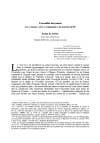
 Télécharger cet article au format pdf
Télécharger cet article au format pdf 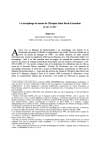
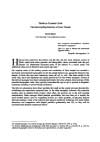
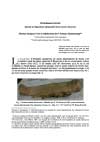
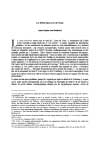
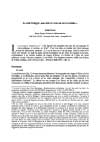


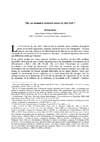
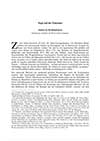
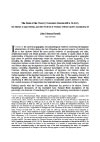
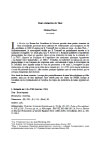
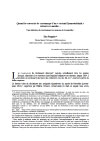
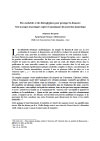





















 Contact
Contact
 Abonnez-vous !
Abonnez-vous ! Équipe Égypte Nilotique et Méditerranéenne
Équipe Égypte Nilotique et Méditerranéenne UMR 5140 « Archéologie des Sociétés Méditerranéennes » (Cnrs)
UMR 5140 « Archéologie des Sociétés Méditerranéennes » (Cnrs) Université Paul Valéry - Montpellier III
Université Paul Valéry - Montpellier III